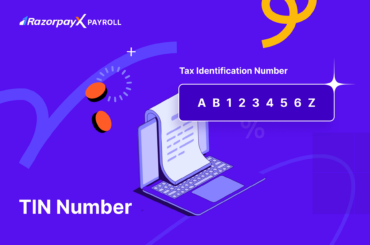Payroll accounting is one of the most crucial elements of any organisation, be it small or large. It is a process that is incorporated to manage the employees’ compensation. It helps in calculating the salary, and taxes, and ensures that all the records are updated on the system.
An effective payroll accounting system ensures that the employees are paid accurately and on time. It also helps the organisation in being compliant with legal and financial regulations.
In this blog, we will learn everything about payroll accounting and how it can help your organisation if you automate it.
Table of Contents
What is payroll accounting?
Payroll accounting is the process of calculating, recording and analysing employee compensation-related expenditures. It only accounts for payroll-related expenses and does not account for any other business cost.
The process of payroll accounting starts with calculating tax and compliance related deductions, bonus additions and other legal requirements, followed by recording these transactions on an accounting system. It ends with reconciliation and reporting these accounts to various stakeholders.
There is a need for payroll accounting systems within a business because payroll forms the biggest chunk of any business’s regular expenses. Additionally, payroll calculations and compliances are complex, creating the need for a separate, robust payroll management system, like RazorpayX Payroll.
What is included in payroll accounting?
Payroll accounting is a business’s official record of all expenses related to payroll and employee compensation. It needs to be comprehensive, accurate and thorough. Information relating to payroll is first recorded as journal entries, following which each journal entry is recorded under individual accounts in the general ledger.
Listed below is a complete list of the expenses that must go into the system:
- Gross wage, salary, bonus, and incentives
- Employer and employee taxes such as state income taxes
- Fringe benefits expenses like Health Insurance
- Salary, insurance, overtime such as healthcare premiums, retirement contribution
How to set up payroll accounting for your business
Setting up payroll accounting for your business is crucial as it ensures accurate payment of employees and helps keep a track of compliance with tax regulations.
Here’s a step-by-step guide that might help you set up your payroll accounting:
Create a payroll policy and procedure
The first step in payroll accounting is to decide your business’s policies around payroll. Here are all the things you need to include in your payroll policy:
1. Salary and compensation
Your decision on how much you want to pay your employees should be made after thorough market and competitor research. Employee compensation is a balance between cash-based benefits and other non-cash perks like medical insurance and food vouchers.
You will also have to decide a payroll schedule – whether you want to pay your employees monthly, fortnightly or weekly; whether you will disburse salaries on the last day of the month, or the 25th – depending on your revenues, accounting processes and personal convenience.
2. Leave policy
Leave policy in a business are the rules governing employee absence from work. It defines how many days of unpaid leave are granted to employees, including sick leaves, casual leaves, maternity or paternity leaves and sabbatical.
Paid leaves will affect payroll costs, and so will need to be accounted for in your payroll accounting system.
3. Employee benefits
Benefits like health insurance, conveyance allowance, food vouchers and more are counted as part of the employee’s compensation, and will need to be accounted for in your payroll accounting system. These benefits will need to be defined in the payroll policy so they can then be accounted for.
Research on payroll systems
Payroll accounting is a crucial feature within larger payroll systems like ADP Workforce, RaozrpayX Payroll and SAP SuccessFactors. There are many payroll accounting systems on the market. For enterprise-level businesses, robust payroll software like SAP, Workday and Oracle HCM would be best.
For mid-market to SME-level businesses, RazorpayX Payroll would be your best bet. RazorpayX Payroll comes with features like fully-automated compliance payments, automated salary disbursals, self-serve dashboards and integrations with 25+ tools like Zoho People, Springverify, Whatsapp, Slack and more.
Gather employee information
To execute payroll, you will need the following documents and details from your employees:
Salary details
Each salary has a unique compensation breakup, with flexible benefits like food coupons and reimbursements. Make sure you have full clarity on each employee’s salary structure.
Bank details
This includes the bank account number, account holder’s name, IFSC code and other details of the bank account you will be disbursing salary to.
Personal details
Employee personal details like PAN, Aadhar number, postal address are important to have on file for tax and compliance filing.
Calculation and disbursal
Calculating payroll involves adding gross pay, reimbursements, bonuses and other additions – and then deducting taxes, provident fund contributions, medical insurance contributions, and other deductions.
This process can be tedious and error-prone; most businesses choose to automate their payroll calculation and disbursal process.
Recording payroll
Once all the salaries have been disbursed, you can proceed with recording the transactions and payments in your books of accounts. The double-entry system of accounting requires you to follow a particular structure and format of recording your transactions. Doing this manually is complex and time-consuming.
Luckily, just like automated payroll calculations, the process of accounting for payroll-related transactions can also be automated.
RazorpayX Payroll has direct integrations with accounting software like Tally, Zoho Books and more – this means that every salary disbursal is automatically recorded in your books of accounts without any manual intervention.
Automated Payroll Accounting
Automated payroll accounting helps streamline the payroll process. It also reduces errors, which leads to saving time and efforts. An automated process will help you in processing the payroll on your defined schedule automatically without much human intervention.
The integration of features like direct deposit and employee self-service portals enhances convenience for both employers and employees. This allows easy access to salary slips and tax forms.
Automated payroll improves efficiency, cost-savings and increases employee experience and satisfaction. Businesses with automated payroll systems are said to be more mature than those with manual payroll processes.
Find out how mature your payroll process is with our bespoke Payroll Maturity Index Assessment!
Take the Payroll Maturity Assessment for Free
FAQs
What is payroll in accounting?
Payroll is typically the total of all the compensation that an organisation pays to its employees for a specific period on a pre-agreed or pre-fixed date.
What are the different types of payroll accounting?
The three different types of payroll accounting are initial recordings, accrued wages, and manual payments.
What are the main components of payroll accounting?
The main components of payroll accounting are salary/wage calculation, tax deductions, insurance premiums, and retirement contributions.
What should be included in payroll records for accounting?
Every payroll record should have: Employee Information: Name, address, employment details Hours Worked: Detailed record of hours worked in a day/week/month Salaries: Details of earnings, bonuses, incentives, and other compensation Deductions: All deductions and withholdings Tax Details: Details of taxes





